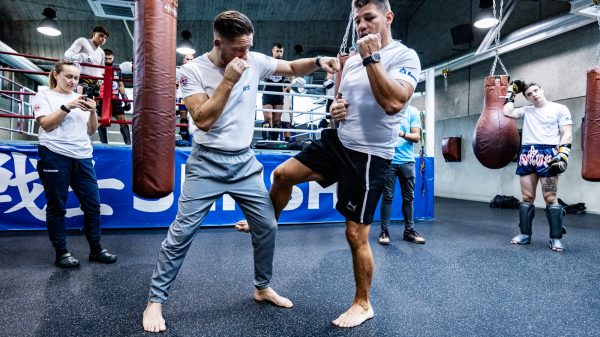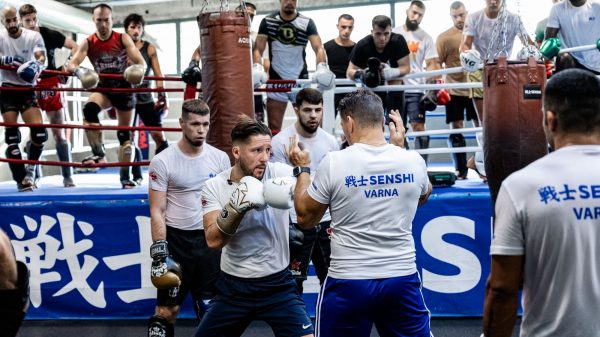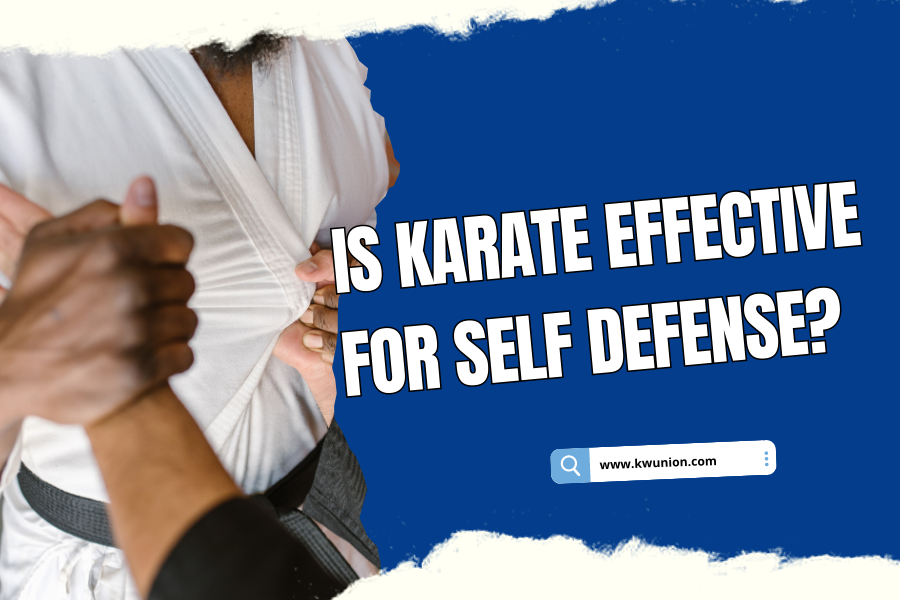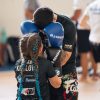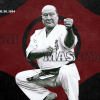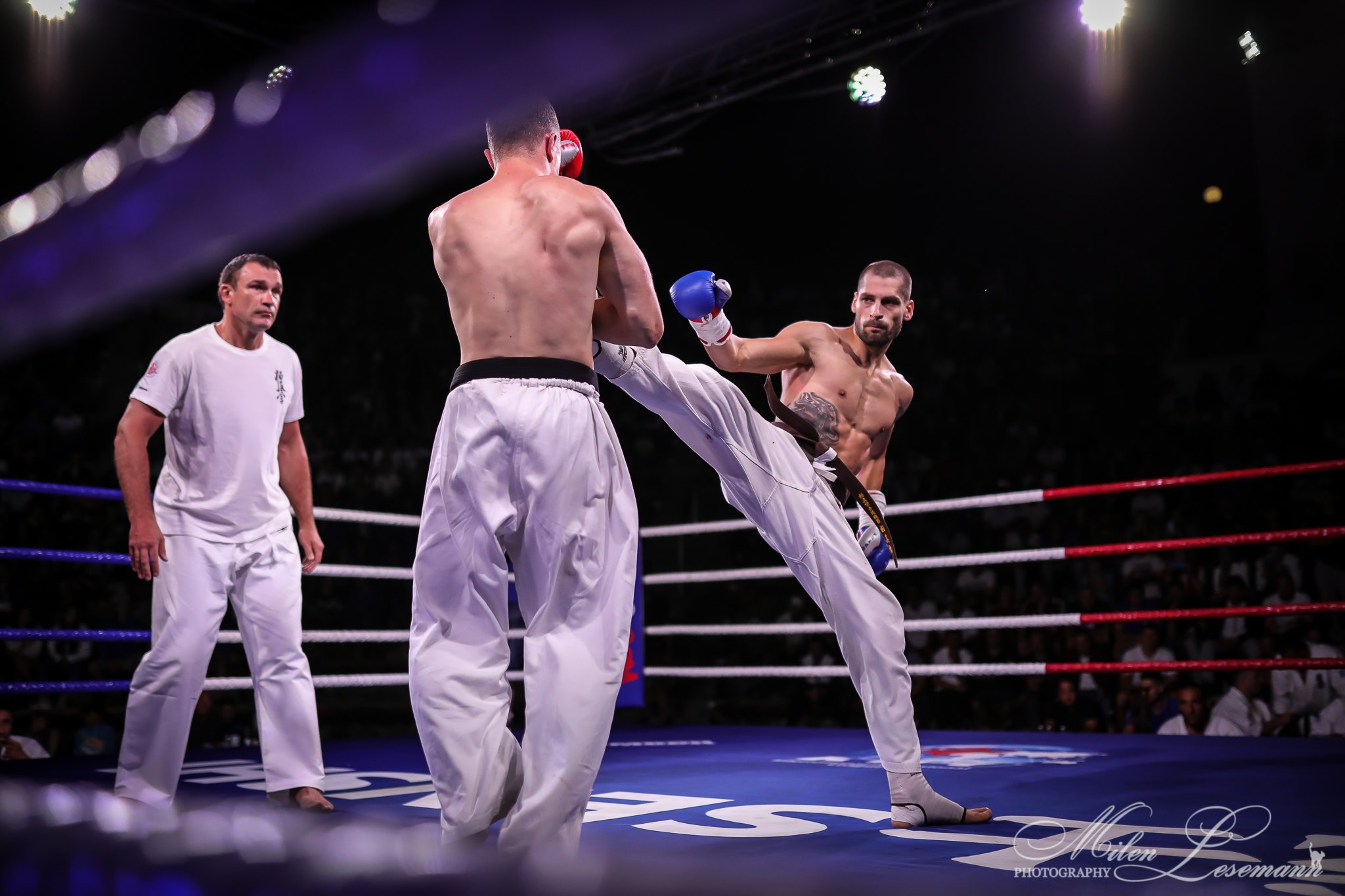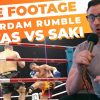Karate Can Be A Very Effective Form Of Personal Defense If It’s Taught And Trained Properly.
Is Karate Effective for Self-Defense?
By Martin Jutras
In my experience, Karate can be a very effective form of self-protection if it’s taught and trained correctly. As you probably know, Karate was not designed for sport fighting, it was designed for self-defense and personal protection.
In this article, I will cover the following:
Why do people doubt Karate’s effectiveness?
Karate is not a singular entity
What do you mean by “effective”?
Understanding Real Karate
How to make sure your Karate will be effective in self-defense?
Choosing a good Karate school
Conclusion
If you searching for a non-lethal self-defense tool, check out this exhaustive list that I’ve put up and made an informed choice before buying.
Karate is one of the most popular and globally practiced martial arts on the planet. Over the years people have come along and criticized classical Karate as being outdated and ineffective compared to modern-day self-defense methods. I don’t agree, that’s why I’ve decided to write this post. I’ll explain to you why Karate is very effective and practical regarding self-protection.
WHY DO PEOPLE DOUBT KARATE’S EFFECTIVENESS?
Karate is now more popular than it was in the ’70s or the ’80s, but unfortunately, there are numerous criticisms surrounding Karate such as that it is an unrealistic and ineffective martial art.
“Karate is stupid, it’s a waste of time, it’s a joke.” We heard it all, right? Let’s examine why people have such wrong perceptions of Karate.
1. MMA gave the public the false impression that karate is ineffective in self-defense
The MMA craving took the martial art world by storm.
With the appearance and rise of MMA (mixed martial arts) or free fight, Karate became the target of a witch hunt.
After seeing many victories of BJJ (Brazilian jiu-jitsu) practitioners and grapplers, people mistakenly believed that traditional martial arts, particularly Karate, were downright ineffective, and had no place in the world of “real fighting”.
Early MMA’s poor performances of Karate practitioners have almost discredited Karate and traditional martial arts in general, a trend that has been growing in the martial arts world for the past couple of decades.
One practitioner is not the art
One practitioner’s failure or success is not representative of the art, whether it’s Karate or any other practice.
If you see a hockey player miss a goal, would you put every single player in the same basket by concluding that hockey players are not good at scoring? Of course not, that would be foolish reasoning, right? Could you then conclude that THIS particular player is not good at scoring? No, you couldn’t conclude that either.
The only conclusion that you could reach is that THIS hockey player missed THAT shot. Even Wayne Gretzky missed some shots, and even Georges St-Pierre lost some matches. That’s called ‘life’, not ‘failure’, not ineffectiveness.
There’s a big difference between a Karate fighter and a BAD Karate fighter. Your Karate is only as good as you make it.
A few years later, karate made a comeback to MMA
Traditional Japanese martial arts such as Karate and judo have made a comeback in the sport of MMA in recent years.
Think about it, back in the days of MMA, Karate was regarded as ineffective and useless in the cage or the octagon. Not so much anymore. The long-standing perception that Karate is impractical for MMA started to turn when Karate practitioner Lyoto Machida rose to prominence.
Indeed, many past champions in recent years boast deep Karate backgrounds that served as the foundation for their striking, footwork, and agility.
LYOTO MACHIDA
Lyoto Machida is without a doubt the most famous Karate practitioner in MMA history. He started training under his father (a 7th-degree black belt and JKA chief instructor) at the age of 2 years old and currently holds a 3rd-degree black belt in Shotokan Karate.
BAS RUTTEN
MMA Legend Bas Rutten (El Guapo!) started practicing martial arts with Tae Kwon Do but quickly changed to Kyokushin Karate, a full contact-oriented form of Karate. He currently has a 5th-degree black belt in this style. Rutten began his MMA career as a pure Karate striker but with time grew up to be a skilled and fierce submission wrestler. Rutten was a three-time “King of Pancrase” and UFC Heavyweight Champion.
CHUCK LIDDELL
Hall of Famer and former UFC light heavyweight champion Chuck Liddell began studying Kempo Karate at the age of 12. Looking at Liddell’s MMA fighting style, it is clear that he successfully relied on his Karate background throughout his entire astonishing career.
GEORGES ST-PIERRE
Arguably considered the greatest MMA fighter of all time, GSP started training in Kyokushin Karate as a kid. You can see that Georges is proud of his Kyokushin roots as he often wears a headband and a Karate uniform before entering the UFC cage. St-Pierre said in numerous interviews that Karate had an enormous, positive impact on his life both as a mixed martial artist as well as a person.
STEPHEN THOMPSON
Stephen Thompson is considered one of the best strikers in the UFC, thanks to his Karate background. Thompson started training at the young age of three, under his father’s guidance. He began competing in kickboxing and Karate at the age of 15. His exceptional striking skills are a rare sight in the Octagon.
GUNNAR NELSON
Despite his reputation as an excellent grappler, Gunnar Nelson, an Okinawan Goju-Ryu practitioner, is one of the greatest examples showing that it is entirely possible to use Karate effectively and intelligently in today’s high-level mixed martial art tournaments. These are only a handful of Karate guys that are making a significant presence in MMA. I expect more to arrive shortly.
DOES IT MEAN MMA IS MORE EFFECTIVE THAN KARATE?
Needless to say, mixed martial arts practitioners are formidable fighters. As you know for sure, these guys are experts in various standing and ground martial arts, making them complete fighters. Does this mean that MMA is the ultimate martial art of self-defense? Not necessarily. Practicing MMA is not a guarantee of success during a real-life confrontation. Self-defense is not so much about the kind or the amount of technique that you know but more about how well you remain in control mentally during the aggression.
2. McDojos gave karate a bad reputation
What is a McDojo?
Unfortunately, Karate schools like McDojos cast a bad shadow over Karate as a whole.
Around the mid-eighties, people started to realize just how much of a cash cow Karate could be. Many “experts” with questionable skills and motivations established Karate schools. The fact that someone owned a Karate dojo was a great source of money. That was the beginning of the martial arts “gold rush”.
Hollywood movies being most people’s only reference point, they started to buy into these crappy, watered-down, Americanized Karate schools. Soon enough, unqualified, unskilled, and inexperienced “black belts” became almost the standard.
Everybody knows the Karate Kid movies and the iconic characters of young Daniel Larusso and his Karate sensei Mister Miyagi. That movie certainly contributed as well to Karate’s popularity. As Karate grew even more popular, more people wanted a piece of the pie. McDojos was born.
As time passed numerous McDojos were popping up all around us and it started to be extremely difficult to find a good school as well as an excellent instructor. Slowly and gradually, as time passes, the art of Karate was being watered down by a lot of these terrible schools making traditional Karateka look unrealistic and ineffective.
WHAT IS MCDOJO?
A McDojo is a martial art school – most often than not, a Karate school – that teaches its students a watered-down, unrealistic, unusable form of martial art, in the name of earning money.
These kinds of schools care more about financial profit than teaching anything realistic or credible in terms of self-defense. Unfortunately, they propel ill-equipped and usually overconfident students into the world believing they will be able to defend themselves adequately when in reality they possess little or no self-defense skills and knowledge.
A huge percentage of McDojos teach a lot of bullshido, a sarcastic and derogatory word used to describe fraud, trickery, and lies in terms related to martial arts. McDojos don’t teach practical self-defense in the first place, and give virtually no preparation or knowledge about real physical violence or even how to prevent it.
A vast number of those schools make use of training methods that just do not and cannot lead to real abilities. As a result of impractical training methods, most of the so-called “Karate” techniques that these students will learn simply won’t work against a fully resisting, uncooperative, or violent assailant.
You can read this interesting article by Jesse Enkamp (the Karate Nerd) about the 93 signs your Karate school is a McDojo.
MCDOJOS, THE REALM OF IMPRACTICAL TECHNIQUES
People need to keep in mind that the majority of Karate McDojos have been watered down to the point of stupidity and near inefficiency, making its Karate worthless against much of anything, ultimately putting the safety of their students in jeopardy.
Additionally, many McDojos will not allow their students to spar. Sparring in Karate is essential because it enables pupils to practice their techniques against a live moving target.
It’s sad to say, but 40 years ago Karate dojos used to be sort of a scary place (in a good way) filled with tough, dangerous, and real fighters.
Not anymore.
3. The growth of sports karate displayed an unrealistic vision of karate
The problem with sports Karate
Sports Karate damaged Karate’s reputation as being an effective martial art.
Some individuals choose to practice Karate as a sport. For them, participating in tournaments, performing kata in front of judges, and winning medals are their motivations for training. Personally, I never cared for point, or “sport” Karate.
In sports Karate, there are weight classes, a ring, protective equipment, rules, governing bodies, and referees. Competitors know several months beforehand that they will be fighting. Sometimes, they know who they will be competing against, and they train for months to get ready for the fight.
There’s nothing wrong with that, but most sport Karate practitioners suck in self-defense. No offense. The state of mind during a sports match is different from that required during a confrontation in a situation of self-defense or personal protection. By training in sports like Karate, you develop bad habits for self-defense.
Sports karate develops harmful attitudes in terms of real-life self-defense
Originally, Karate was developed for something very different than tournaments, it is a method of self-defense. Karate was (and still is in traditional schools) a method to develop both your body and spirit while gaining tools and skills enabling you to defend yourself, without having to use any weapons. Unfortunately, Karate has evolved into a sport where the fastest and easiest technique wins in combat. As a result, sports Karate practitioners develop attitudes, habits, and reflexes that are dangerous to use in a personal defense scenario.
Here are a few examples.
1. Bouncing and showing your back is a dangerous combination
This “fighting attitude” is the status quo in today’s tournament, but it doesn’t work in real life. The habit of bouncing impairs your balance and stability, telegraphs a move to your opponent, makes your strikes weak, and your expending a lot of energy unnecessarily, and creates predictability. Also, having a “sideways” fighting position is very dangerous as it exposes your back to your opponent. You don’t want that in a real confrontation.
2. A false sense of distance
During sports, Karate kumite or combat, the range at which you spar is much greater compared to the distance of a real altercation. In real life, most confrontation quickly becomes close-quarters, in-your-face, self-defense situations. At this range, it’s much harder to parry and defend.
3. Control vs. penetration
In most sports Karate combat (i.e., point fighting), the strikes are delivered, inches from the target. For obvious safety reasons, the emphasis is on control and not on penetration. Defending yourself against an attack intended to touch the skin is substantially different than defending the very same attack delivered to knock you out or to hurt you. It’s okay to train to control your strike, but it’s necessary to fight with contact as well.
4. Unrealistic self-defense-based attack
In point tournaments, you generally use techniques that you would not use in a self-defense situation. Sorry, to disappoint you but mawashi-geri (roundhouse kick), ura-mawashi-geri (hook kick), and jumping uraken (jumping back fist) should be avoided on the street.
5. No common ‘street’ attack
During a sporting match, you defend yourself against attacks that can be used strictly in a sportive context. On the street, no one will attack you with a head-height hook kick or an axe kick. These techniques are very much standard in point fighting competition, but none of them belong in the list of the most common street attacks.
6. The false sense of effectiveness
As you probably know, in point-based fighting, once a point is scored, both fighters stop fighting. This creates a false sense of efficiency. Stopping the fight like this prevents you to capitalize on a favorable opportunity or recover from an unfavorable situation.
7. You don’t learn to manage pain
In point fighting combat, as soon as one fighter scores are hurt or stunned, the match is stopped and only resume once the fighter has recovered. You don’t learn to “weather the storm”, you don’t learn to fight through the pain. On the street, if you get sucker-punched, your opponent won’t stop until you recover to try to finish you off.
8. No grabbing
During a sports Karate match, a tiny amount of stand-up grappling is permitted, and only a few seconds are granted for a foot sweep or throw for example. Seizing the opponent’s limbs or apparel is unauthorized. That being said, it is an integral part of original Karate, it’s called Torite or “grabbing hand” in Japanese. Yes, traditional Karate is much more than a striking art. The sad thing is, not many people know about this.
9. Not every strike are equals
The problem with point system fighting is that it treats all strikes as equal. Almost any hit scores as a point, so whether you aim at the nose, the jaw, or the forehead, it counts as a point. In real life, it’s entirely possible that you hit your opponent, and he doesn’t go down. I am in no way judging sports Karate practitioners, but I find it unfortunate that Karate has turned into a game of tag and has lost its sense of realism and efficiency concerning personal defense. Old Karate masters are probably turning in their graves.
Karate is not a singular entity
Today, Karate comes in so many flavors that it’s impossible to judge Karate as a whole.
Karate comes from China but mainly developed in three Okinawan villages (Naha, Shuri, and Tomari), each of which developed its specific style of Karate: Naha-te, Shuri-te, or Tomari-te.
Today, Goju-Ryu, Shito-Ryu, Shotokan, and Wado-Ryu are recognized as the four main styles, but there are dozens of styles of Karate out there, each with its specific techniques, positions, groundwork, weapons, locks, throws, and internal energy.
That being said, the real issue when people refer to Karate, is that they refer to it as a singular entity, when in fact there are many variations and countless interpretations of each in individual schools.
Even though they share the same foundation, these styles vary in the way they apply techniques. Some have circular movements, others have straight movements, some are soft and others are hard. Some have point sparring and others do full contact knockdown training, and the differences continue.
Consequently, it is illogical and absurd to claim that Karate is impractical, as Karate as a whole doesn’t even exist.
But, what do you mean by “effective”?
Before we can answer if Karate is effective or not, it is of crucial importance to define what is effective.
Effective in doing what exactly? From a Karate perspective, effectiveness is being able to survive aggression – lethal or not – perpetrated in real life, not in a ring. In other words, Karate doesn’t teach you how to fight, it teaches you how to defend yourself. That’s a big difference. Let me demonstrate to you a few practical Karate moves that I teach in my self-defense seminars, and see for yourself.
During aggression, a Karate practitioner has no intention of “winning” the aggression – all that he or she cares about is, avoiding getting hurt and surviving the threat.
Please remember that traditional Karate does not promote a consensual fight with skilled opponents. That’s what we call self-defense and that’s precisely what original Okinawan Karate is about (and what every type of Karate should be).
Understanding real karate
To understand the art of Karate, it is essential to understand its nature and its place among martial arts and combat sports.
Karate is a civilian Martial Art
Karate is a civilian art oriented towards self-defense, not towards fighting. The goal of traditional Karate was explicitly explained by Okinawan Karate Master Anko Itosu: “Karate is not intended to be used against a trained opponent but as a way to protect yourself by using the hands and feet if assaulted by a villain or ruffian”.
Karate is not about being effective against another highly trained human being (boxer, wrestler, MMA, etc.), it is not meant to be used in a ring. That is what combat sports do, and Karate is not one of those.
In Karate, the primary objective is to survive a confrontation. You don’t need to eliminate your aggressor (even though that might do the job). You merely need to remove yourself from the encounter.
It’s entirely possible to protect yourself by punching the opponent and running away or even hiding, for example. This would indeed not be regarded as “winning a fight”, nevertheless it would be an adequate defense. The very best self-defense technique is undoubtedly staying away from a confrontation.
Original karate is self-defense
Real Karate is practical, effective, and oriented toward self-defense.
In its existing form, Karate is less than two hundred years old, however, its origin dates back thousands of years.
The art was developed on the island of Okinawa (formerly known as the Ryukyu Kingdom ), and its early form was deeply influenced by ancient Chinese martial arts, collectively referred to as Kung Fu.
It should be clearly understood that Karate is neither a combat sport nor a gymnastic, but a martial art focussed on personal protection. That’s the reason why it was created in the first place.
Most people just don’t know how practical Karate can be, because they never saw an efficient way of training it, they never saw a real Karate dojo. Some others just don’t know much about real Karate because they trained in a McDojo since they were kids.
The essence of Okinawan Karate has always been real-life effectiveness, and it is very similar to modern military close combat systems: simple, lethal, and practical.
That might not appear to be the case when you see some Karate schools, I know. Although Karate was initially created to be a great martial art for civilian self-protection, today’s McDojos teaches utter crap.
Karate is a lifestyle
With its roots in Okinawa Karate, Karate is not only a self-defense martial art but also a way of life that promotes the holistic and spiritual aspects of Chinese and Japanese martial arts. That’s the spirit of Budo.
Budo is different from Bujutsu (the ancient Japanese battlefield arts) as it is a double way where spiritual growth goes hand in hand with learning the art of self-defense. Old jujutsu was not concerned with the personal or spiritual development of the individual, but with pure and hard efficiency.
The purpose of traditional Karate and Budo is to develop a well-balanced mind and body, through training in fighting techniques.
Contrary to MMA, the time spent in a traditional Karate dojo is devoted to various practices like kata, breathing and conditioning exercises (hojo undo), energy circulation exercises (kiko), and meditation (mokuso) – not only combat.
How to make sure your karate will be effective in self-defense?
You may train in Karate, but will you be able to defend yourself or those you love in a real life, against a real attacker?
Your Karate’s effectiveness has to do with a large number of parameters but it can be a very practical martial art, as long as you make sure that you are training the right way, and with the right people.
To be effective in a real self-defense situation, techniques should be trained in a wide range of situations and need to be tested against a fully resisting, completely uncooperative training partner.
Here are a few tips to help you make your Karate work in real-life aggression.
Self-defense starts with prevention and awareness, check out these 18 basic safety tips every woman should know.
1. UNDERSTAND THE REALITY OF SELF-DEFENSE
I know I talked about it before, but this is an important point. I hope that this is something you understand by now – combat is different than self-defense.
So whether we’re talking about kumite fighting in the dojo or fighting in an MMA cage, those have nothing to do with the reality of self-defense. Train accordingly.
2. IT’S ABOUT HOW YOU TRAIN
Effectiveness is directly related to the way you train. If you merely punch and kick the air while screaming, it will not go to enable you to get very far regarding applicability.
For your Karate to give good results in an actual life situation, not only do you have to practice striking, but you have to exercise the timing of your attacks and counters as well. Practice with a live partner, you have to learn how and when to make distance and when to close in on your opponent. You cannot fully learn that through kihon or kata. You need to spar.
Any system can be street or ring effectively as long as you practice for realistic street or ring scenarios when learning and training. Ultimately, it’s the individual that makes Karate effective or ineffective, not the art itself.
3. BRING SELF-DEFENSE BACK TO THE HEART OF KARATE
Do you like sports Karate or recreational Karate? That’s fine with me, but don’t forget the real-life application of your Karate.
You must observe and analyze your practice, with total honesty and clarity. Identify the points that could be problematic in a real defense situation, and improve on them. Go on YouTube and look at street fight videos, you’ll get the picture pretty fast.
Forget flashy, acrobatic, out of the Matrix techniques, and bring back self-defense at the heart of your practice.
4. TRAIN VS WEAPONS
Learning how to defend yourself against weapons is essential for self-defense-based Karate (i.e. traditional Karate). In a life-threatening attack, it’s to be expected that your adversary or opponent is going to be armed.
While getting punched in the face isn’t pleasurable, it’s nothing in comparison to getting stabbed or demolished by a baseball bat. You need to be ready for those scenarios.
Weapons with which you can be attacked come in different forms. The most commons are knives, broken bottles, scissors, pens, bats, sticks, crowbars, wrenches, and hammers.
Hopefully, you’ll never gonna be attacked by a guy with a weapon, but if you do and you never trained against a knife or other weapons, it’ll be your downfall. I train with rubber training knives and foam rubber baseball bats, and it helps. These are great tools
5. GO BEYOND SPORTS OR RECREATIONAL KARATE
I have talked before about the danger of creating bad self-defense habits while practicing tournament fighting. If you like sports Karate or recreational, you don’t have to stop but understand the difference between a sports match and a real assault.
I fully understand that there are many reasons why people study Karate. Some individuals train in Karate as a hobby or pastime. Other individuals train for its mental and spiritual benefits, or even to learn to manage stress and lack of self-confidence. Other trains in Karate for socializing and comradery.
I understand and respect that everybody has their reason to practice Karate, but in my opinion, a good teacher is someone capable to incorporate realism and practicality into the Karate that he or she teaches.
6. PRACTICE LIVE SPARRING
Depending on your school, it may be a long while before you start sparring. That is especially true if you train at a McDojo.
All styles have the same problem if you have never used it in a pressure situation it’s not going to work! I’ll repeat it – if you never or rarely spar, chances are your self-defense skills won’t serve you much against a real-life aggressor.
Please understand well, I’m NOT saying that you’ll fight on the street the way you spar. Far from it, but practicing sparring regularly will sharpen your reflexes.
You’ll become comfortable at hitting a target that moves, and I’m not talking about a swinging punching bag! More importantly, you’ll become more and more comfortable at dealing with your opponent’s attack. You need to spar frequently so that you can keep calm when the punches are flying and when “under pressure”.
When you take a swimming class, you expect to get in the water and swim, not practice swimming motions laying on a bench. The same goes for Karate.
7. TRAIN WITH RESISTING PARTNERS
To help you be effective in an actual self-defense situation, techniques need to be trained in a wide range of situations and must be tested against a fully resisting, totally uncooperative training partner.
Trying to apply your techniques with a resisting partner who is also attempting to use his technique is a fantastic way to grow your skills. Managing distance becomes second nature and reaction becomes automatic. No pressure experience = no win!
8. LEARN TO MANAGE STRESS
As you can imagine, sports martial arts require the management and control of stress during a tournament, a fight in a ring, or a cage.
It is essential to understand that, because of the rules, the stress and anxiety faced by combatants are experienced in a controlled environment in which parameters are defined, and unknown variables are minimal, if not absent.
On the street, it’s the complete opposite scenario: there are no rules, no defined guidelines and the coefficient of surprise is extremely high.
Nobody knows when a confrontation is going to take place. In a public bathroom? While coming back to your car? While jogging? Who will be the attacker? What is its size? Is it under the influence of substances? What are his intentions? Is he alone? Does he have a knife or a gun?
You can easily understand that a real-life defense situation is a lot more complicated and deadly than a sports fight. Therefore, the management of stress is a critical issue regarding survival.
It’s your techniques and skills combined with your self-control and your ability to manage the stress that’ll make you survive real aggression.
9. WORK ON TRADITIONAL GRAPPLING
The vast majority of modern Karate styles focus on striking, but traditional Okinawan Karate has always included grappling techniques in its curriculum: throwing, grabbing, and joint locking techniques. Most people ignore that. Go back to the root and study of Torite (Karate’s grappling).
10. LEARN GROUND GRAPPLING
Many confrontations indeed end up on the ground, and that’s especially true if the victim is a woman. It is vital, from a self-defense perspective, that, as a Karateka you learn basic ground grappling.
Your intention is not to grapple with a potential aggressor, but you need to know a bit of grappling nonetheless as you might inadvertently end up on the ground: you might trip, you might slip, you might freeze and be taken down, etc.
You should learn (and master!), a few basic ways to protect yourself while on the floor as well as a few ways to flip your opponent and get back safely on your feet. The goal here is not to turn you into a grappler but to learn just enough to survive if you end up on the ground.
11. TRAIN VS MULTIPLE OPPONENTS
I’m fully aware that defending yourself against multiple opponents is an enormous problem, but that should not prevent you from training and familiarizing yourself with such a scenario.
The best way to train yourself to fight against multiple opponents is to have multiple training partners attack you during sparring practice. Go slowly at first, then progressively increase the speed.
Through this exercise, you’ll learn how to prevent being surrounded and cornered. It’s tough, but you need to practice it. Of course, the ferocity of multiple assailants can’t fully be simulated, but it’s far better to have some training than none.
12. LEARN FROM THE KATAS
You might not know this, but katas were initially designed to reinforce self-defense lessons. They contain a multitude of brutally effective grappling, throwing, choking, and joint-locking techniques appropriate for close-in combat.
Most Karate detractors believe kata techniques to be unrealistic and ineffective, but it’s obvious that they were often never taught the meaning or purpose of its practice.
To fully understand and appreciate the knowledge contained in a kata, you shouldn’t look at it “as a whole”, but as a series of self-defense techniques. In other words, one kata can contain dozens of techniques.
Learn the bunkai or the applications of kata, study one movement, analyze it, disassemble it, and learn from it.
By studying kata deeply, you’re probably going to realize that the apparent movements contained in kata are usually not the intended action. Even what seems to be a basic block frequently is not just what it appears to be. Most kata frequently involves striking as well as grabbing and throwing techniques.
While you explore each of these facets of kata, you will realize even more that Karate is an incredibly complete and practical system of civilian self-defense.
13. FORGET ABOUT WINNING
When practicing sports martial arts, the important thing is to win, because that’s the goal of the competition.
If you want your Karate to be effective in self-defense, it is essential to change this state of mind because, in a situation of real aggression, the important thing is not to win but to survive. The goal of Karate is “to not lose” rather than “to win”.
In self-defense, it is perfectly okay to hit or push, get out, and run as long as possible. You must put your ego aside and avoid engaging in a fight with the aggressor and make him pay for his aggression. Your goal is not to score the perfect mae-geri, your goal is to survive and see your family again the next day.
CHOOSING A GOOD KARATE SCHOOL
Finding a good Karate school can be tricky.
The problem is average people, don’t know the difference between a good and a bad martial art school.
To keep things simple, the one thing that separated a good school from a bad school is how realistic training is. Regardless of whether it’s MMA, Muay Thai, BJJ, Tae Kwon Do, or karate a lousy school is going to teach dangerous practices and habits which unfortunately will get you difficulty.
On the other hand, a quality school will teach you good habits that will make a significant difference in a dangerous situation. Please realize that in every art there are very few good schools and teachers, so you must research carefully.
CONCLUSION
So as you can see after reading through this article, the problem with Karate is not the art itself, but the way, it is taught and trained.
The majority of schools today will not prepare you for real-life scenarios and will only teach impractical stuff. Recreational Karate is fine, but not when it puts your safety or the safety of someone you love in jeopardy.
Authentic original Karate consists of strategies and self-defense techniques (several of which would under no circumstances be authorized in a sports tournament because they could potentially cause severe or even permanent injury) focussed on life protection in the real world, facing lethal or non-lethal attack.
Traditional Karate also includes teachings that deal with more than the physical side of self-defense but enhances the psychological qualities that control an individual’s capacity to respond to stress in times of conflict.
Studying and training a certain way can make you a very dangerous person to mess with. It’s only wise to conclude that Karate is as good as you make it.
Is YOUR Karate effective?


